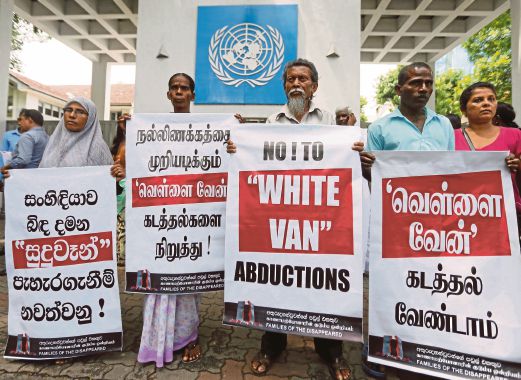Does political stability have an effect on the plight of refugees? If a country has been plagued by decades of infighting, can political stability increase the prospects for reconciliation and a lasting peace?
Sri Lanka is witnessing a complex, transformative era in politics — President Maithripala Sirisena’s victory in January last year, coupled with the election of Prime Minister Ranil Wickremesinghe in August that year — underscore the momentum for political reform in the country. There are three key lessons to note of the political developments in Sri Lanka since, and its impact on the minority Tamils.
FIRST, the Sirisena administration is determined to foster lasting peace. As a result of the amendments to the Constitution, much presidential power has been decentralised to Parliament.
The 18th and 19th Amendments have introduced a two-term limit on the presidency and checks on the Executive’s powers, respectively. The Tamil National Alliance (TNA), the third largest faction in Parliament, is the government’s official opposition.
Indeed, political rapprochement has provided the TNA with leverage to influence the decisions taken by the prime minister, as well as the political space to partake in the formulation and implementation of local and national policies.
Although the electoral results and constitutional amendments indicate that the government has the political will to enforce change, it must do so whilst exercising great political management in order to keep the Sirisena-Wickremesinghe coalition intact.
SECOND, the government is addressing the rights of Tamils locally in order to prevent and reduce further grievances and alienation in the Tamil community. These include returning land back to the original Tamil owners, returning to civilian governance, creating better prospects for equal growth and providing assurances for a peaceful return home of refugees.
The government has also started to release a number of Tamil political prisoners, who were arrested and detained under the Prevention of Terrorism Act (PTA).
In its 2015/2016 Annual Report, Amnesty International states that 45 detainees were released after rehabilitation. There has also been a pledge in September last year to repeal the PTA in favour of anti-terrorism legislation that meets international standards.
There is a willingness to acknowledge past abuses and commit to reforms, as demonstrated by the government’s partnerships with the United Nations High Commissioner for Refugees and the Indian government to facilitate voluntary repatriation of Tamils.
The Sri Lankan government has co-sponsored UNHCR Resolution 30/1 Promoting Reconciliation, Accountability and Human Rights in Sri Lanka, and it cooperates with the UNHCR on an ongoing basis.
For instance, the UNHCR conducts a voluntary repatriation programme that provides free air travel and allowances — last year, 208 families and 453 persons returned from India to Sri Lanka, an increase from 137 and 338, respectively, in 2014; as of Feb 29 this year, 50 families and 163 persons of Sri Lankan origin have returned from India.
The government’s funding and its partnership with the Indian government for the Indian Housing Project — in which 46,000 houses are to be constructed or repaired in the northern and eastern provinces — is another key initiative to note.
Such efforts should, in turn, neutralise hostilities between the majority Sinhalese and Tamils, particularly those in Sri Lanka and Tamil Nadu.
However, addressing the issue of continued militarisation in the northern and eastern provinces remains difficult. This is the third key observation to note, as it could slacken the pace for reform that Sri Lanka attained during the elections last year.
Militarisation has continued since the war ended in 2009, largely due to the Presidential Task Force for Resettlement, Development and Security that the Rajapaksa administration had set up.
Locals could be affected by the continued presence of military personnel in terms of their prospects for family tracing and reunification, and their livelihood opportunities, as some lands occupied by the military were previously used for agriculture and fishing grounds.
This may indicate that there is a limit on the extent to which the Sri Lankan government is willing to compromise for reconciliation. On the one hand, it has made significant political improvements to cater for the political aspirations of Tamils. On the other hand, it is hesitant to address issues that remain politically sensitive to the Sinhalese.
In essence, there have been unexpected and positive changes throughout the Sirisena administration’s first year in office. Indeed, the Sri Lankan government has taken a few steps in the right direction.
However, genuine reconciliation remains a challenge given the political sensitivities of Sinhalese grassroots nationalism.
The question remains whether measures, such as facilitating the safe return of refugees, and the rebuilding and repairing of homes, are enough to heal the wounds of war to minimise Tamil discontent.
This article first appeared in New Straits Times on 17 May 2016.





